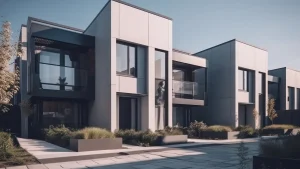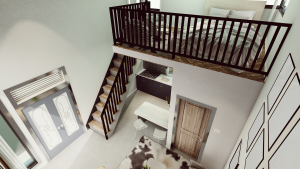The intersection of health and habitat has never been more pertinent than in today’s fast-paced, technology-driven world.
Wellness architecture, an innovative design philosophy, marries the ancient need for shelter with contemporary desires for physical and mental well-being.
By prioritising aspects such as natural lighting, air quality, and connection to nature, architects and designers are crafting spaces that do more than house our daily activities; they enhance our quality of life, bolster our health, and uplift our spirits.
The Foundation of Wellness in Architecture
Historically, the concept of integrating health into architectural design is not new; ancient civilisations like the Romans and Greeks designed their cities and public baths with airflow, sunlight, and the natural environment in mind.
However, the modern movement towards wellness architecture places a renewed emphasis on these elements as essential components of healthy living.
This section of wellness in design focuses on creating environments that seamlessly blend functionality with an innate sense of harmony and health.
Key elements such as natural light, superior air quality, and non-toxic materials are not just add-ons but fundamental considerations in the creation of wellness-oriented spaces.
By prioritising these elements, architects aim to minimise harmful effects associated with poor design choices, such as inadequate ventilation or the use of materials that emit volatile organic compounds (VOCs).
The goal is to craft spaces that not only meet the basic needs of shelter but also actively contribute to the occupant’s wellbeing.
Integrating Nature and Architecture
The biophilic design principle advocates for a symbiotic relationship between nature and built environments, drawing on the innate human affinity for the natural world.
By incorporating elements such as plants, water features, and natural materials, architects can create spaces that reduce stress, enhance creativity, and promote physical health.
Studies have shown that such environments significantly contribute to overall well-being, demonstrating the critical role nature plays in architectural design.
Case studies, such as the Edge in Amsterdam or the Khoo Teck Puat Hospital in Singapore, exemplify how integrating green spaces, natural light, and materials can create a healthful and invigorating environment.
These projects highlight the potential for architectural designs to not just accommodate nature but to actively engage with it, creating spaces that are as beneficial for human health as they are sustainable.
Sustainable Practices for Healthier Environments
Sustainability and wellness are deeply intertwined within the architectural domain, with sustainable practices offering a pathway to healthier environments.
The use of non-toxic, sustainable materials not only minimises environmental impact but also ensures indoor spaces are safe and conducive to good health.
Technologies such as green roofs, solar panels, and efficient waste management systems further enhance the wellness quotient of buildings by promoting energy efficiency and reducing pollution.
The push towards sustainability in architecture reflects a broader understanding of health that encompasses both the individual and the planet.
Buildings designed with sustainability in mind often feature improved air quality, natural light, and temperature regulation, all of which contribute to the physical and psychological well-being of their occupants.
Through sustainable design, architects can create environments that support a healthier lifestyle and a more resilient future.
Innovative Design Techniques for Wellness
The advent of smart technology and innovative design techniques offers new avenues to enhance wellness in architecture.
Automated systems for climate control and adaptive lighting can create environments that adjust to the needs of occupants, improving comfort and reducing strain.
Furthermore, the design of spaces specifically for mental health, such as quiet zones and areas dedicated to mindfulness and relaxation, acknowledges the importance of mental well-being alongside physical health.
Innovative architectural designs increasingly include features that support both the physical and mental health of occupants.
From acoustic engineering to reducing noise pollution to layouts that encourage movement and interaction, these techniques exemplify the multifaceted approach to wellness in architecture.
As technology advances, the potential for integrating such innovations into our living and working spaces promises a future where buildings not only shelter but actively promote health and wellbeing.
Challenges and Considerations
Despite the clear benefits, designing for wellness presents several challenges, including higher costs, space limitations, and the need to balance aesthetic and health-related considerations.
Furthermore, ensuring that wellness-oriented designs are accessible and inclusive requires careful planning and a commitment to ethical principles.
Architects must navigate these challenges with creativity and a dedication to the well-being of all potential occupants.
The pursuit of wellness in architecture also raises important ethical considerations, particularly regarding accessibility and inclusivity.
Ensuring that health-promoting designs are available to all, regardless of socio-economic status, is a crucial challenge for the field.
As the demand for wellness-oriented spaces grows, architects and designers are called upon to create environments that not only promote health but do so in a way that is equitable and just.
Conclusion
The integration of wellness into architectural design represents a profound shift in how we conceive of and interact with our built environments.
Far from being a luxury or an afterthought, wellness-oriented design is becoming a fundamental aspect of how we construct the spaces in which we live, work, and play.
As this movement gains momentum, it holds the promise of a healthier, more harmonious world, where architecture serves not just to house our bodies but to nurture our well-being in every sense.
The call to action for architects, planners, and all those involved in the shaping of our environments is clear: to champion and implement designs that truly promote health and wellness for everyone.







